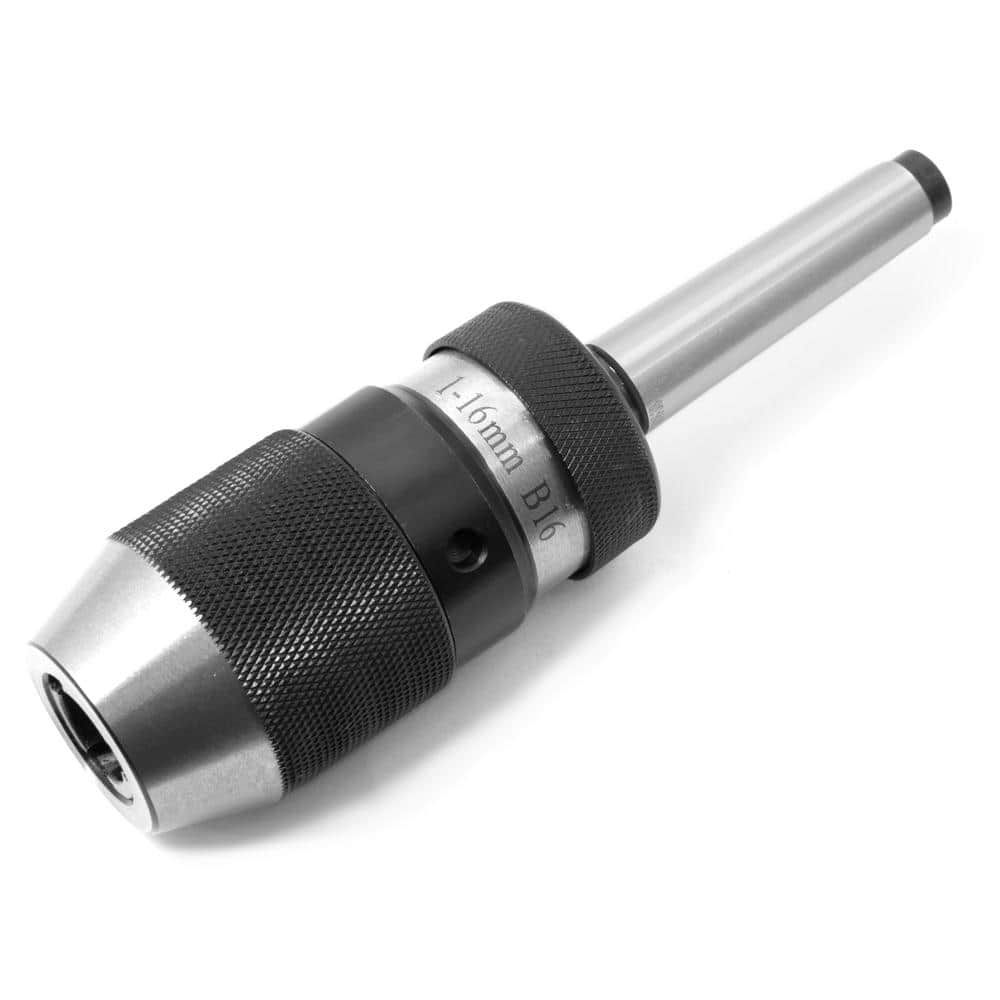Tough to decide. These don't rotate so TIR is not an issue. I have two, one from MA and one from CM. I want to pick the best one to use but don't know how to judge which is best because you can't measure runout, etc. Any thoughts?
The MA is an "Accupro" and the CM is a "Jacobs"
I can't find any information on the net about either of these. Given that they are both static tailstock chucks, does it even matter all that much?
View attachment 715648
Let me start with this disclaimer :
I know NOTHING ! about pool cue lathes, only about machining in general. I would like to learn more and I do have some experience and training on wood and metal lathes.
the following links ( below my notes) show the dimensions of morse and Jacobs tapers. You can buy blanks with either taper to adapt to what you like. for example if you used a reamer or certain sized bit frequently then you may make a precision Jacobs taper collett to hold it. Then when changing the bit or reamer it is simply a means of removing and installing the entire piece and since there is no chuck involved the chuck isn't causing vibration or runout. a collet is often used for precision, but its also a handy way to change things about quite quickly.
usually machinist lathes use a Morse taper in the tailstock and usually a drill press will use a Jacobs taper. you can get adapters but the size is normally proportional to the machine's size.
Don't think of them as brands, Instead these are specifications about the dimensions of the taper, and not specific to a pool cue lathe. I'd like to learn more about pool cue lathes and turning, as most of the machining skills I have will apply but I would also expect some differences.
a test for proper alignment of a regular metal lathe is to turn a piece straight, then unclamp and turn it end for end. then take another cut. If the tailstock is parallel it will take an even cut. the height of the tool is normally on center.
usually a bar heavy enough not to have issues with deflection is used Deflection causes, basically a football shape because as the cutter moves away from theheadstock there is more deflection than near the chuck or the tailstock.
to turn a slight taper then one would intentionally move the tailstock off center, and I know nothing about pool cue lathes specifically. id like to learn more. I do machining at work on a larger lathe and have a little 9" southbend clone at home.
if you are repetitively grabbing things of the same dimension, perhaps a tapered collet could be used. a collet on a jacobs or morse taper may be a more accurate way of clamping If it is to be clamping the same size and shape of piece. perhaps it is possible to make a tapered collet to fit a pool cue taper if grabbing a part which is to be cut off and discarded is not an option.
a 3 jaw chuck usually has no adjustment, a 4 jaw chuck can be dialed in so the piece can be accurately centered. If the piece is being machined and is a bit off center in the chuck but that area is to be discarded then the accuracy of the headstock center is less important. often that section is not part of the finished piece. If it is then accuracy of the headstock center may be more important.
on a "normal" lathe the toolpost can be set at a slight angle and usually that is not power feed so the operator can screw it across but the movement range is limited to only a few inches, so this is not really acceptable for such a long taper. It is possible to move the tailstock off center to turn a longer taper but this is not something done often in regular machining. its rare that a tailstock on a regular lathe is shifted off center, but a pool cue lathe must be made to allow this to be done more often and perhaps has more adjustment. because it's made to do tapers.
in turning anything long and thin there is the issue of deflection and a steady rest helps to stop the deflection somewhat. I would think a pool cue lath may have more range of adjustment of the tailstock and perhaps some better means to control deflection. The deflection is usually caused by the pressure put on the tailstock by the cutting tool causing the workpiece to deflect away, resulting in a football shaped outcome. using a grinder, sander or router, it may be possible to reduce deflection by reducing the load put on the workpiece by the cutter.
aside from inacuracy , another factor in turnig is balance, as it is sometimes possible to create an undesirable circumstnace where vibration or resonance and speed and other conditions combine to create interesting but completely undesirable "designs"in the workpiece. in some cases altering the weight of things can help, or changing the height of the cutting tool or type of cutting tool. there is a lot going on when different frequencies of resonation combine. a very heavy ( usually vintage) machine will have less issues than a lightweight made in china POS lathe.
Dimensions of Jacobs Taper shanks
www.hhrobertsmachinery.com

